82.4 million people displaced in the year of the pandemic
An overview of the world’s displacement crises in 2020

As we entered 2021,
82,376,032
people were displaced by persecution and conflict.
2020 was a year like no other. A year that began with the usual mix of optimism and despair ended with the world grappling with the greatest crisis since World War Two.
The cause was not conflict, climate or economic recession, but a deadly pandemic.
Conflict continues as “normal”
In 2020, countries around the world closed their borders and told people to stay at home because of the pandemic.
But war, conflict and persecution continued as “normal”. While millions of people stayed at home, millions more were forced to flee and leave everything they knew behind.
By the end of the year, some 82.4 million people were displaced from their homes. This is the highest number ever recorded – an increase of 2.9 million on the previous year.
The deadly consequences of Covid-19
When Covid-19 first started to spread, many aid workers feared the worst. The virus, they thought, would surely run riot if it was allowed to take hold in refugee camps, where people live in overcrowded conditions and soap and water are often in short supply.
Things didn’t quite work out that way. Relatively few displaced people actually caught the virus, thanks to a combination of factors.
Refugees living in camps tend to have little contact with the outside world. Plus, most camps were quick to introduce hygiene and awareness-raising measures. In addition, refugees as a group are relatively young (around half are under the age of 18) and so are less susceptible to the disease.

An NRC staff member demonstrates Covid-19 prevention measures to an indigenous community in Colombia. Photo: Milena Ayala/NRC
An NRC staff member demonstrates Covid-19 prevention measures to an indigenous community in Colombia. Photo: Milena Ayala/NRC






















However, as the year progressed, the longer-term impacts of Covid-19 started to emerge. And they are proving to be just as deadly as the virus itself.
Research by the Norwegian Refugee Council (NRC) in August 2020 showed that more than three quarters of displaced people had lost income since the start of the pandemic.
This devastating economic impact is tipping many into hunger and homelessness. In Somalia alone, over 170,000 displaced families were evicted in 2020, many because they had fallen into rent arrears due to lost income.
As competition for jobs and aid becomes more fierce, displaced people are more likely to suffer violence and discrimination. Gender-based violence is growing and children are becoming more stressed as Covid-19 spawns a “coping crisis”.
Aid cuts threaten millions of lives
The economic impact of Covid-19 is not only being felt in developing countries. Wealthy nations have invested billions of dollars in supporting their own economies through the crisis.
The knock-on effects of this are now becoming clear, as governments cut their humanitarian aid budgets in an attempt to save money. In November, the United Kingdom announced that it was cutting its aid budget by 40 per cent – breaking the commitment it made in 2013 to spend 0.7 per cent of its gross national income (GNI) on aid.
As we look ahead to the second half of 2021, and countries around the world take tentative steps towards reopening, one thing is clear. Global problems demand global action. The refugee crisis affects us all, and we must all be part of the solution.
Africa























Africa accounts for more than a third of the world’s displaced people.
Some of its conflicts, such as those in DR Congo and Somalia, have been going on for decades. The Sahel region is a particular hotspot. This belt of land to the south of the Sahara Desert has been the centre of violence between different communities and a series of conflicts involving armed groups. 2020 was the deadliest year on record for civilians in the central Sahel, with more than 2,400 losing their lives in Burkina Faso, Mali and Niger.
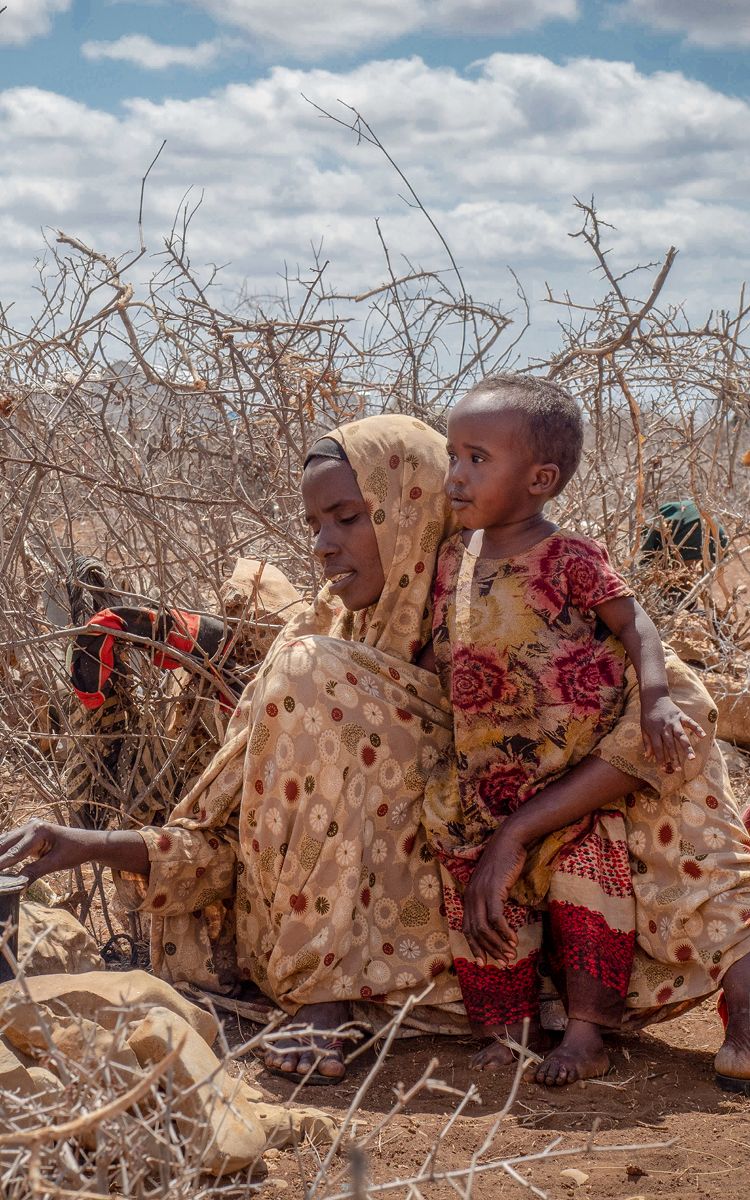
“I want my children to go to school and have a different life to the one I’ve had,” says Faduma, from Somalia. Photo: Ingrid Prestetun/NRC
In addition, environmental factors are forcing millions of Africans to flee each year and increasing the tensions that can lead to conflict. In the last year, drought in Somalia, a plague of locusts in East Africa and flooding in South Sudan have all taken a heavy toll – and these are just three examples of many.
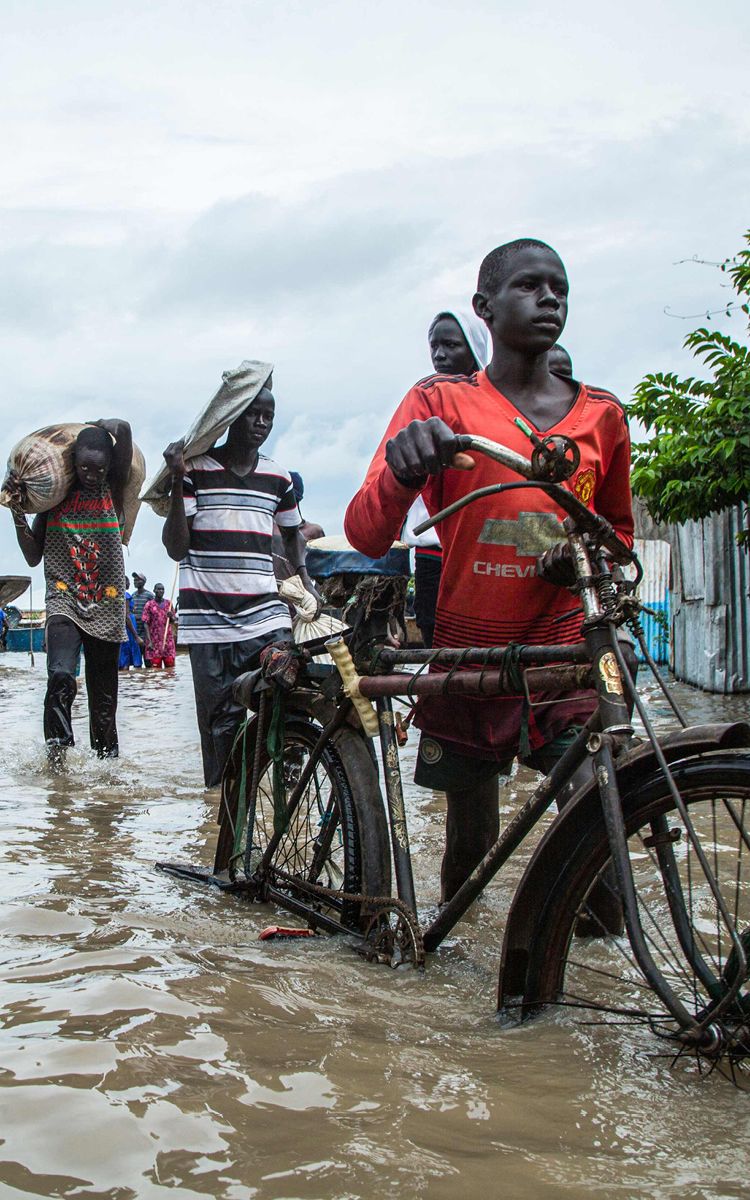
Displaced people walk through floods after the Nile overflowed its banks in South Sudan. Photo: Akuot Chol/AFP
Yet, we rarely read about these crises in the news. Eight out of the top ten countries on our annual list of neglected crises are in Africa. These countries are largely ignored by the world’s politicians, NGOs and media, in favour of higher profile crises elsewhere.
Here are some of the crises that should have received more attention in 2020.

“I want my children to go to school and have a different life to the one I’ve had,” says Faduma, from Somalia. Photo: Ingrid Prestetun/NRC
“I want my children to go to school and have a different life to the one I’ve had,” says Faduma, from Somalia. Photo: Ingrid Prestetun/NRC

Displaced people walk through floods after the Nile overflowed its banks in South Sudan. Photo: Akuot Chol/AFP
Displaced people walk through floods after the Nile overflowed its banks in South Sudan. Photo: Akuot Chol/AFP

Nafi Zango fled with her family in Burkina Faso. Aged 8, she has never set foot in a classroom. Photo: Ingebjørg Kårstad/NRC
Nafi Zango fled with her family in Burkina Faso. Aged 8, she has never set foot in a classroom. Photo: Ingebjørg Kårstad/NRC

Astride carries her baby and water supply in Lazare camp, home to 25,000 displaced people in the Central African Republic. Photo: Tom Peyre-Costa/NRC
Astride carries her baby and water supply in Lazare camp, home to 25,000 displaced people in the Central African Republic. Photo: Tom Peyre-Costa/NRC

Um Rakuba refugee camp in eastern Sudan, home to thousands of Ethiopian refugees who have fled the conflict in Tigray. Photo: Will Carter/NRC
Um Rakuba refugee camp in eastern Sudan, home to thousands of Ethiopian refugees who have fled the conflict in Tigray. Photo: Will Carter/NRC
Burkina Faso – one of the fastest growing crises of 2020
On Monday 20 January 2020, armed men opened fire on a market in Nagraogo, in the Centre-Nord region of Burkina Faso, killing 36 people. Earlier in the month, 14 people were killed when a school bus was hit by a roadside bomb attack.
These are just two examples of the horrific violence that led to Burkina Faso becoming for a time the fastest-growing displacement crisis of 2020. Conflict has ravaged this once peaceful West African country, and the number of internally displaced people has soared from 87,000 in January 2019 to over a million today.
The country is also on the brink of a hunger crisis. One in ten people needed food assistance in 2020, and in the border area of Mali, Burkina Faso and Niger, 4.5 million people are now classified as “food insecure” – meaning they don’t have reliable access to healthy, nutritious food.
President Kabore received a vote of confidence in November 2020, when he was re-elected as Burkina Faso’s leader. In his inauguration speech, he vowed to bring security and stability and lead the country towards “national conciliation”. He has a tough challenge ahead.
Post-election violence plunges CAR into chaos
A little over 1,000 km to the east of Burkina Faso, another country was holding elections. The citizens of the Central African Republic (CAR) went to the polls on 27 December 2020, leading to mass unrest.
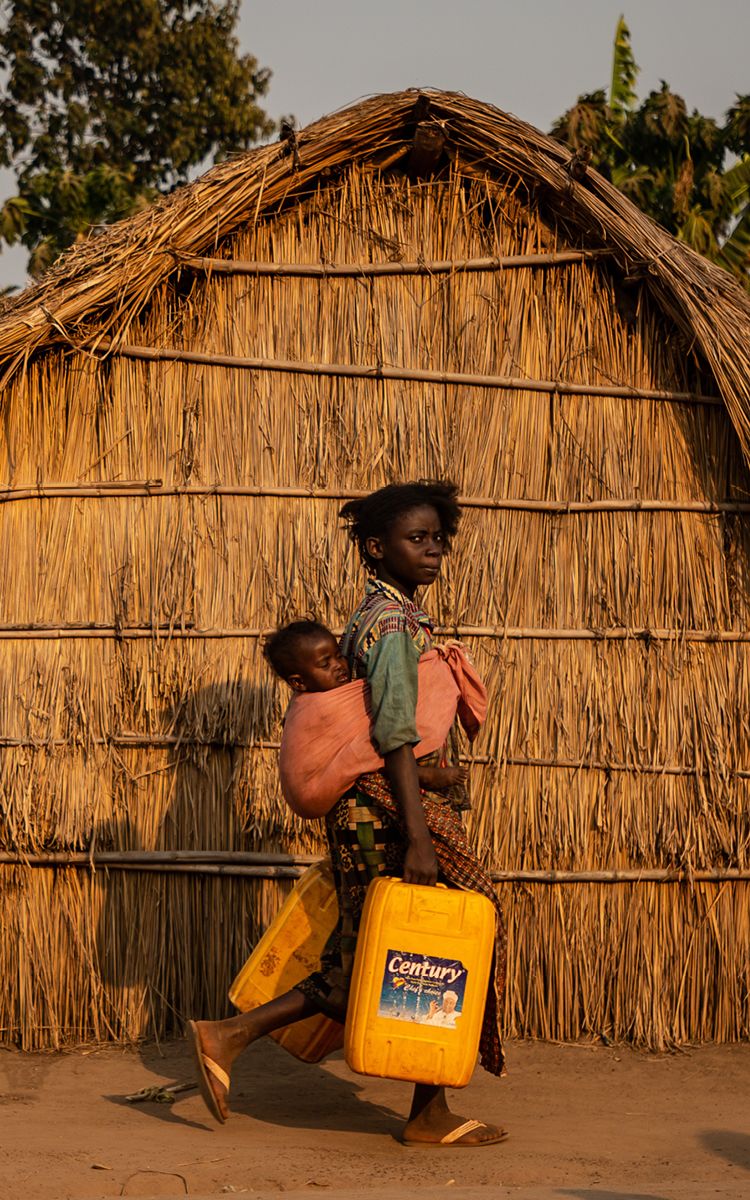
Astride carries her baby and water supply in Lazare camp, home to 25,000 displaced people in the Central African Republic. Photo: Tom Peyre-Costa/NRC
The violence that followed has led to a growing humanitarian crisis. Around 276,000 people have fled their homes to other parts of CAR since mid-December, with an additional 200,000 fleeing over the border to neighbouring countries.
In total, almost one in three Central Africans are now displaced – a staggering number. Food, health care, water and shelter are the most pressing humanitarian needs. Alarming reports of sexual violence and forced recruitment by armed groups highlight an urgent need for protection.
Trouble in Tigray
In Ethiopia, rising political tensions and widespread violence came to a head in November 2020. A political standoff between the federal government and authorities in the northern region of Tigray escalated into a full-scale invasion.
Over the months that followed, over a million Tigrayans fled their homes as fighting continued. More than 62,000 people are believed to have fled over the border into neighbouring Sudan.
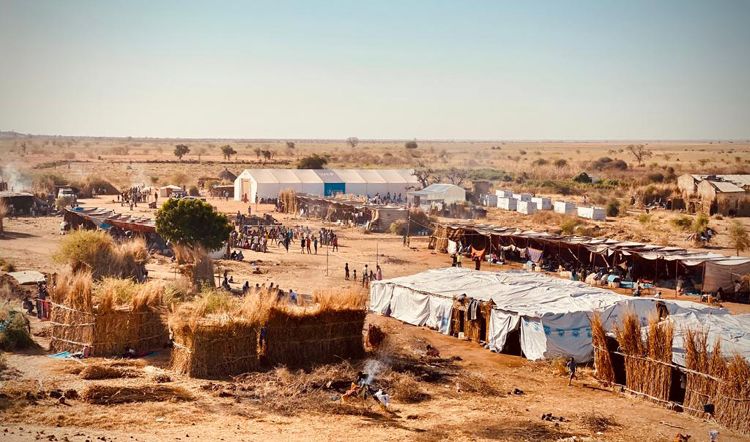
Um Rakuba refugee camp in eastern Sudan, home to thousands of Ethiopian refugees who have fled the conflict in Tigray. Photo: Will Carter/NRC
Although the government declared its military operation to be “over” after it took control of the Tigrayan capital Mekelle on 28 November 2020, the conflict shows no signs of abating.
Amid accusations of widespread human rights abuses, including massacres and mass sexual violence, the humanitarian picture is bleak. Aid agencies are still unable to access large areas of the region, and some 4.5 million people – around two thirds of Tigray’s population – are currently estimated to be in need of humanitarian assistance.
Meanwhile, more than a million people were displaced by conflict and violence in other parts of Ethiopia during 2020.
Cabo Delgado: a major crisis unfolds
Further south, the situation in Mozambique has deteriorated sharply over the past year, with more than 750,000 people forced to flee violence in the northern province of Cabo Delgado.
In March 2021, a brutal attack on the gas-rich town of Palma made international headlines. The BBC reported that “witnesses talk of seeing Palma’s streets strewn with beheaded bodies, while some of the dead had also been hacked to pieces”. Some 60,000 people were displaced in this one attack alone.
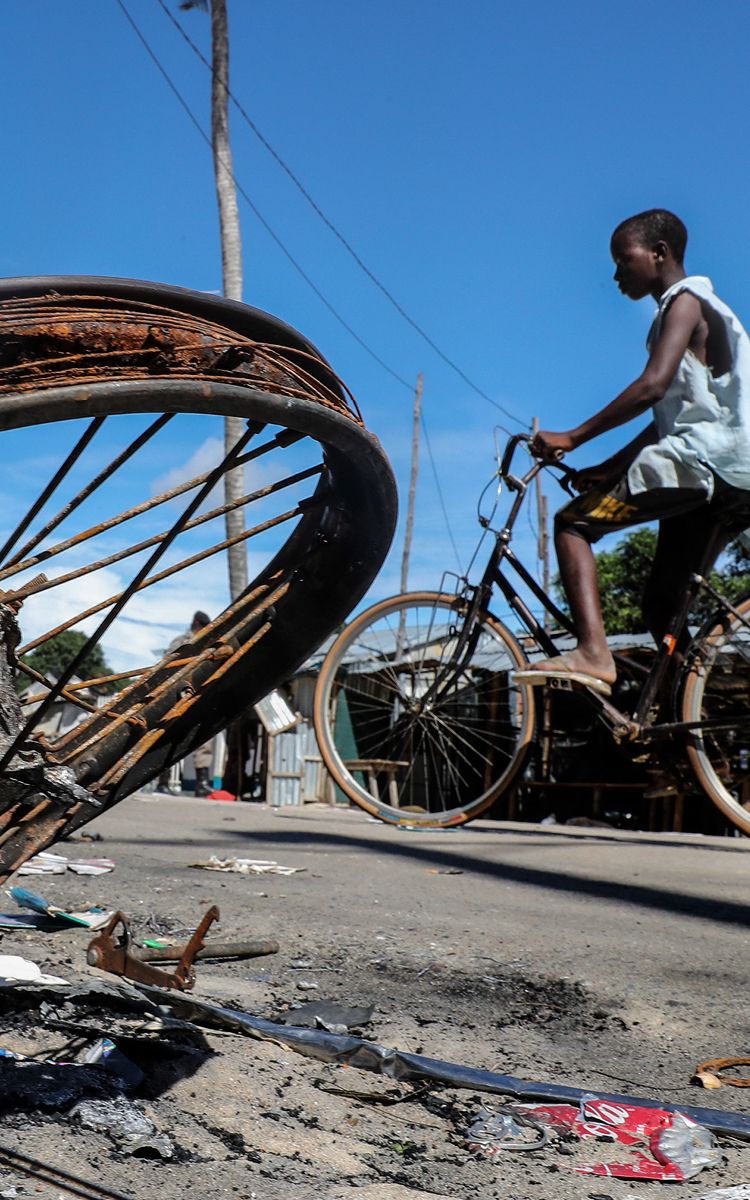
A boy cycles past the debris of a motorbike in a street in Palma, Cabo Delgado. Photo: EPA/JOAO RELVAS/NTB
More than 90 per cent of people who fled the conflict are staying with family and friends in communities that are already vulnerable. The province is staring at a major and likely long-lasting humanitarian crisis, with nearly a third of its population displaced and almost a million people facing severe hunger.
The country is also affected by extreme weather. At the end of 2020, an estimated 93,000 people were displaced from their homes as a result of floods and cyclones.
DR Congo: the world’s most neglected crisis
Despite decades of conflict and humanitarian needs on a colossal scale, the Democratic Republic of the Congo was the world’s most neglected crisis in 2020.

The main street of Tsuya camp, DR Congo. This area hosts 20,000 displaced people from surrounding villages. Photo: Tom Peyre-Costa/NRC
DR Congo currently has over 5.2 million people displaced within its borders, equivalent to the entire population of Norway. Incredibly, it also hosts more than half a million refugees from neighbouring countries.
Violence between communities and disputes over land forced an average of 6,000 people per day to flee their homes during 2020. While peace negotiations stalled, villages were burned to the ground and women, men and children were raped and maimed.
Almost 20 million Congolese were reliant on aid by the end of 2020, compared with 13 million the year before. More than 3.4 million children under the age of five are suffering from acute malnutrition. On top of everything, the country was affected by two Ebola outbreaks.
Despite this, the international community provided only a third of the funding needed to meet DR Congo’s basic humanitarian needs in 2020 – making it one of the least well-funded crises in the world.

A boy cycles past the debris of a motorbike in a street in Palma, Cabo Delgado. Photo: EPA/JOAO RELVAS/NTB
A boy cycles past the debris of a motorbike in a street in Palma, Cabo Delgado. Photo: EPA/JOAO RELVAS/NTB

The main street of Tsuya camp, DR Congo. This area hosts 20,000 displaced people from surrounding villages. Photo: Tom Peyre-Costa/NRC
The main street of Tsuya camp, DR Congo. This area hosts 20,000 displaced people from surrounding villages. Photo: Tom Peyre-Costa/NRC
Mark’s story
Mark was 17 years old when the fighting reached his hometown of Kananga in DR Congo. Both his parents were killed and he was forced to drop out of school and move in with his grandmother.
He tried his best to avoid getting caught up in the violence, but was targeted by militia leaders and recruited to fight. He was given potions and amulets that he was told would make him bullet-proof and invincible.
Mark was sent to the front. He is not proud of the things that he was asked to do. They have left him with psychological scars that he admits he will live with for the rest of his life.

A man walks past the ruins left by years of conflict in the historic centre of Benghazi, Libya. Photo: Ivor Prickett/The New York Times/NTB
A man walks past the ruins left by years of conflict in the historic centre of Benghazi, Libya. Photo: Ivor Prickett/The New York Times/NTB
Unity government brings hope to Libya
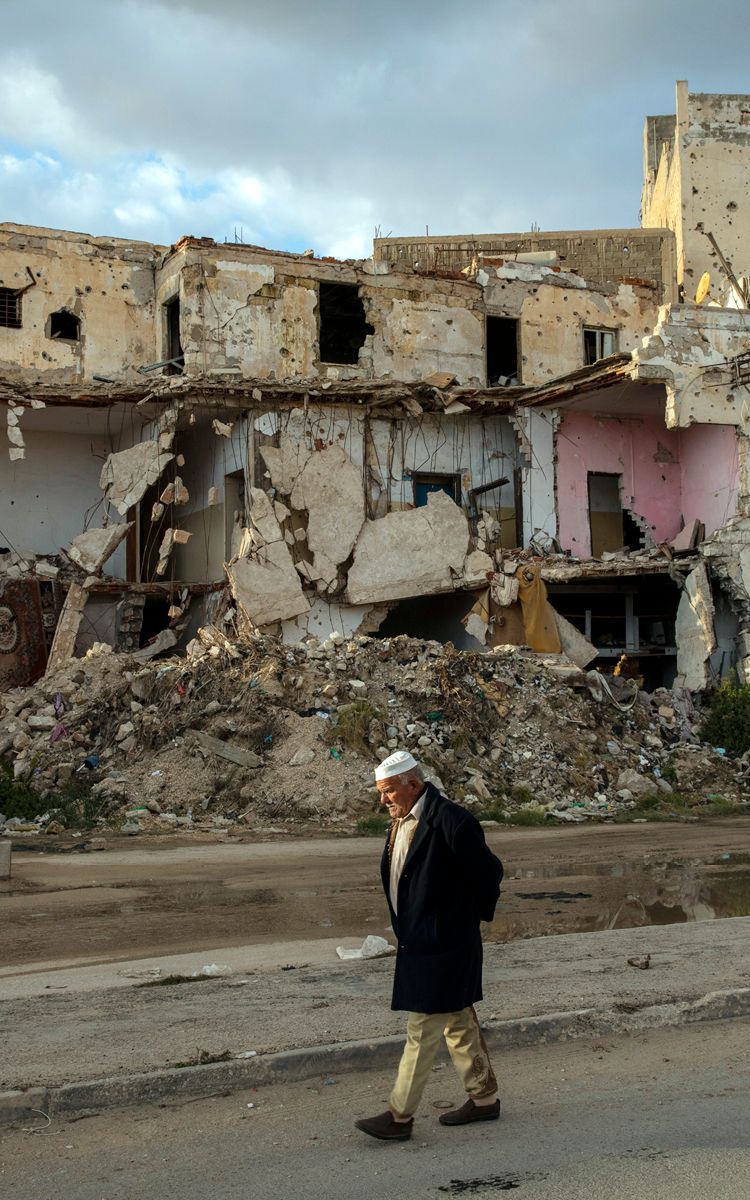
A man walks past the ruins left by years of conflict in the historic centre of Benghazi, Libya. Photo: Ivor Prickett/The New York Times/NTB
Libya has been battered by a decade of conflict. Then, in October 2020, came a ray of hope. A ceasefire deal between the warring parties paved the way for a peace settlement.
Finally, in March this year, the parties reached an agreement – and the Government of National Unity was formed. Peace and stability seemed to be a genuine prospect at long last.
However, much needs to be done to change the daily realities of the Libyan people. The conflict has left some 1.3 million people in need of humanitarian assistance across the country. Security, basic services, jobs, homes and infrastructure are all desperately lacking.
The situation in Libya is especially complex because the country is also a departure point for many migrants looking to make the hazardous journey across the Mediterranean to Europe.
In total, more than half a million migrants, refugees and asylum seekers are currently living in Libya. They are at risk of being arrested, and are vulnerable to exploitation, kidnapping, sexual violence, torture and extortion. Most do not have legal status in Libya and have no way to make their status official or apply for work permits.
The people of Libya desperately need stability. Despite the ceasefire, the situation remains tense. We need the ceasefire to continue to hold.
Middle East
and Asia























A destroyed classroom in Syria, where millions of children have seen their education disrupted by the decade-long conflict. Photo: Tareq Mnadili/NRC
A destroyed classroom in Syria, where millions of children have seen their education disrupted by the decade-long conflict. Photo: Tareq Mnadili/NRC

Displaced Iraqis at Hammam Al Alil Camp are registered before being evicted and sent on buses back to their areas of origin. Photo: Alan Ayoubi/NRC
Displaced Iraqis at Hammam Al Alil Camp are registered before being evicted and sent on buses back to their areas of origin. Photo: Alan Ayoubi/NRC
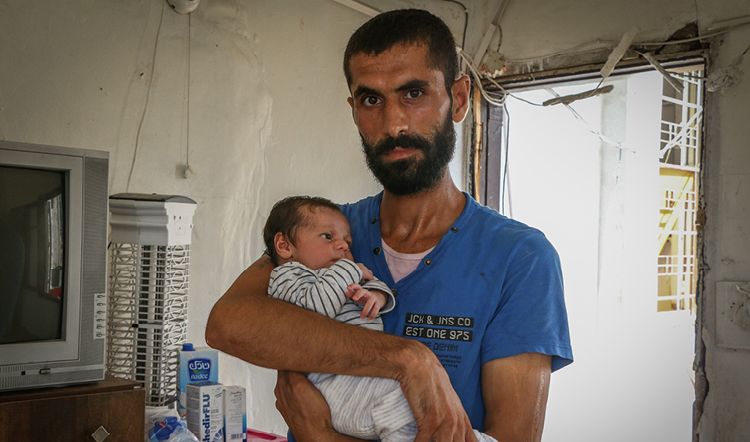
Mohammad, a Syrian refugee, saw his apartment ripped apart by the explosion in Beirut. Photo: Zaynab Mayladan/NRC
Mohammad, a Syrian refugee, saw his apartment ripped apart by the explosion in Beirut. Photo: Zaynab Mayladan/NRC
The Syrian crisis continued to cast a long shadow over the Middle East as it entered its 2nd decade. Over 6 million people are now displaced within Syria, with a similar number living as refugees in neighbouring countries.
Meanwhile, years of simmering tension in the West Bank and Gaza came to a head in May this year with an escalation of violence that left more than 240 dead. And aid cuts are threatening lives across the Middle East, especially in war-torn Yemen.

A destroyed classroom in Syria, where millions of children have seen their education disrupted by the decade-long conflict. Photo: Tareq Mnadili/NRC
Syria: a decade of shame for humanity
When the conflict in Syria began in 2011, most people thought it would be over a few months. Today, ten years on, we are still counting the cost of the biggest displacement crisis since World War Two.
More than 13 million Syrians are now displaced, and the crisis shows little sign of ending. In early 2020, some 900,000 people were forced to flee their homes as violence flared in Idlib – the biggest displacement since the conflict began.
In 2020 as a whole, only 467,000 Syrians returned home, while 1.8 million were newly displaced inside the country – almost four times as many.
In a recent NRC study, displaced Syrians across the Middle East overwhelmingly said that they had lost hope of returning home in the next five to ten years, even as they face deteriorating living conditions in Lebanon and Jordan.
“This was a decade of shame for humanity,” said NRC Secretary General Jan Egeland. “Unless urgent action is taken to reverse this stalemate, the next decade will continue to bring suffering and displace several millions more.”
Read more about a decade of war in Syria
Camp closures in Iraq leave thousands in limbo
Meanwhile, in Iraq the government continued to close down displacement camps across the country, leaving at least 100,000 people in limbo. Many people have no homes to go back to, and end up living on the edge of towns, in damaged apartments or unfinished buildings.

Displaced Iraqis at Hammam Al Alil Camp are registered before being evicted and sent on buses back to their areas of origin. Photo: Alan Ayoubi/NRC
A 47-year-old woman pushed out of a camp recounted how she had to move four times before ending up in yet another camp.
“The most difficult thing when they transport you in cars and you don’t know where you are heading, is to know that most of these areas do not want you,” she said.
Beirut blast adds to Lebanon’s deepening crisis
As 2020 progressed, the crisis in Lebanon deepened. Political paralysis, a crippled economy and an aggressive Covid-19 outbreak had put the country under immense pressure. With an estimated 1.5 million Syrian refugees living within its borders – a quarter of its population – Lebanon was heading for economic collapse.

Mohammad, a Syrian refugee, saw his apartment ripped apart by the explosion in Beirut. Photo: Zaynab Mayladan/NRC
Then, on 4 August 2020, a huge explosion ripped through the port area of the capital city, Beirut.
In an instant, thousands of people were made homeless. Many were refugees from Syria who lived in the poorest areas of the city, close to the port. The blast destroyed property for miles around, with some 200,000 homes affected, according to UN estimates.
In the aftermath of the explosion, an estimated 70,000 workers in Beirut lost their jobs. Many residents struggled to make ends meet and relied on aid to get by. Syrians were increasingly exposed to discrimination and abuse as the economic situation worsened.
Several months on, Beirut still hadn’t fully recovered. While the majority of homes had been repaired, a staggering number of families found themselves living in poverty and facing eviction and homelessness.
“They are increasingly jobless, unable to pay rent, incurring huge debts and evermore dependent on aid,” said NRC’s country director in Lebanon, Carlo Gherardi. “The doors to people’s homes may have been repaired, but the damage to the lives behind those doors remains.”
Neji’s story
“Lebanon has been going through a terrible situation over the past few months,” said Neji, a Syrian refugee in Beirut, when we met him in September 2020.
“I used to work at the port but since the coronavirus outbreak, the work opportunities have decreased, and I have barely been able to pay the rent. Now with the explosion, I don’t have a job at all.”
“The other day, a charity organisation was distributing food parcels in the courtyard… My roommates and I were beaten and shouted at because they claimed that we were taking assistance away from them. We were not even there but they took out their anger on us because we were Syrian.”

Palestinians cannot “go back to normal”
2020 began with world opinion sharply divided, as US President Donald Trump unveiled his “peace plan” for the Palestinian and Israeli people. But as the high-level debates rumbled on, daily life for Palestinians continued very much as before.
Poverty, unemployment, movement restrictions and poor basic services are the norm in Gaza, where the majority of residents are reliant on international aid.
In parts of the West Bank and East Jerusalem, meanwhile, settlement expansion continues to threaten the most vulnerable Palestinians. Their property is regularly demolished by Israeli forces to make way for settlers, and even tents donated to Bedouin refugees have been confiscated – in defiance of international law.
As Covid-19 entered its second year, Palestinians were exposed to yet more discrimination. While Israel led the world in vaccinating its citizens against the virus, 4.5 million Palestinians in the West Bank and Gaza were denied access to vaccinations.
In May 2021, the situation in the region became critical. Palestinian protests against forced evictions in East Jerusalem escalated into intense violence. When Palestinian armed groups began to launch rocket attacks on Israel from Gaza, the Israeli military responded with all-night airstrikes.
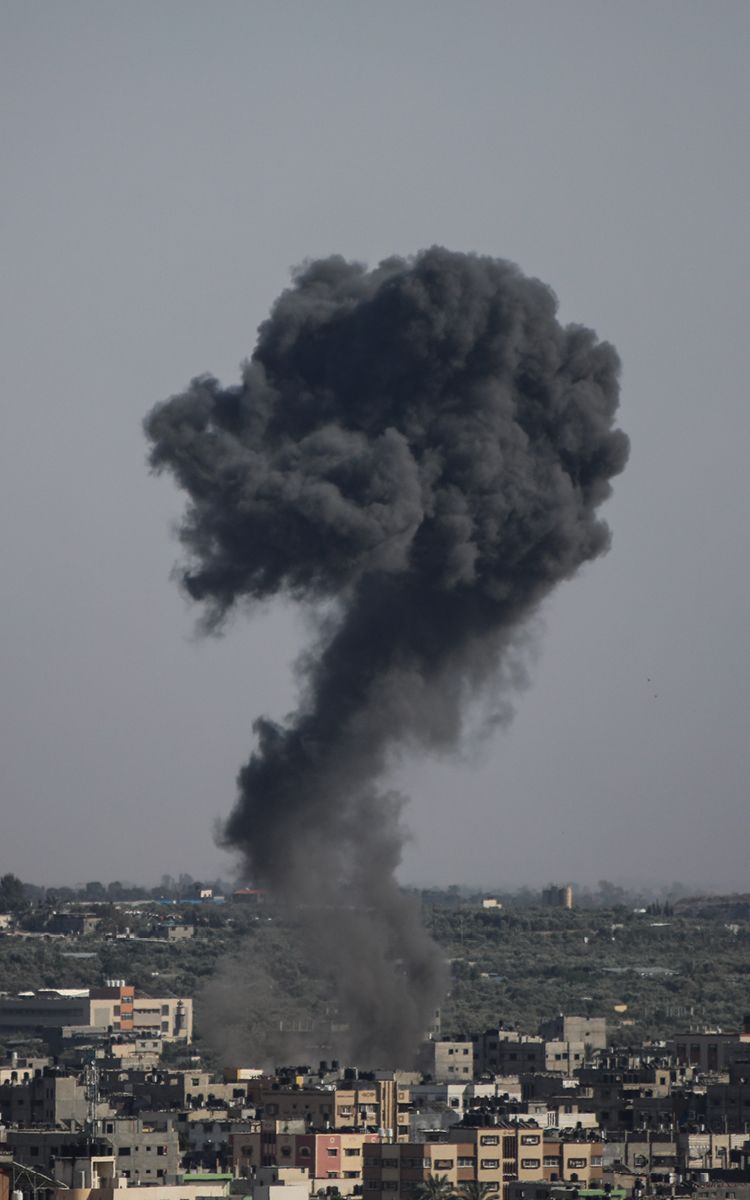
Smoke rises from a bombed house in southern Gaza City, during the recent escalation of violence. Photo: M Hajjar/NRC
As ever, civilians are paying the heaviest price, with at least 232 Palestinians and 12 Israelis killed in the fighting, including 65 children. A ceasefire on 20 May promised a return to normality. But for 5 million Palestinians living in the occupied territories, “normal life” is very far from normal.
Aid cuts leave Yemenis facing starvation
As aid cuts started to bite in the second half of 2020, nowhere was more severely affected than Yemen. Dubbed “the world’s worst humanitarian crisis” by the UN, Yemen’s humanitarian needs are huge, with starvation a very real prospect for millions as the conflict wears on.
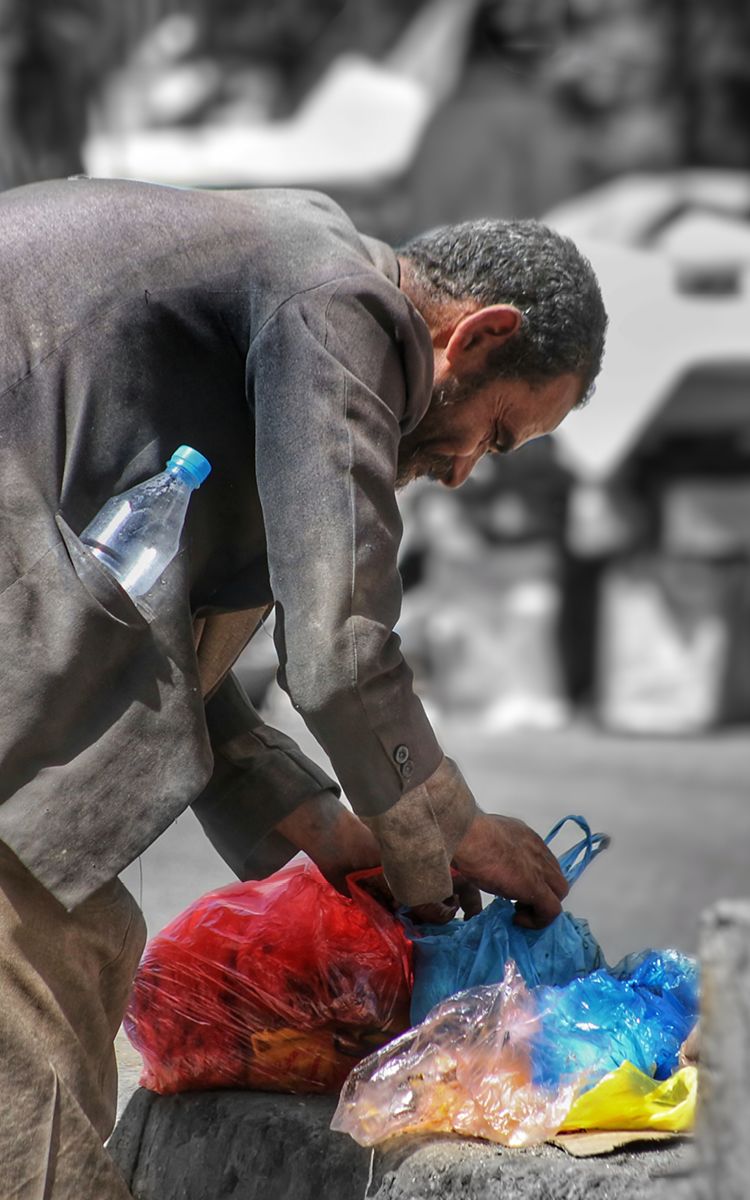
Taiz City in Yemen is facing a growing food crisis. Photo: NRC
In December, the UN issued a famine warning, predicting that over half the Yemeni population – some 16 million people – would face crisis levels of food insecurity by mid-2021.
Yet despite the scale of the suffering, donors recently raised than less half of the US$3.85 billion that is needed to provide humanitarian assistance to the 20 million Yemenis in need this year. This is a billion dollars less than the figure raised in 2019.
“Cutting aid is a death sentence,” UN Secretary-General António Guterres said, when announcing the disappointing figures. “The best that can be said about today is that it represents a down payment.”

Smoke rises from a bombed house in southern Gaza City, during the recent escalation of violence. Photo: M Hajjar/NRC
Smoke rises from a bombed house in southern Gaza City, during the recent escalation of violence. Photo: M Hajjar/NRC

Taiz City in Yemen is facing a growing food crisis. Photo: NRC
Taiz City in Yemen is facing a growing food crisis. Photo: NRC
Afghanistan faces an uncertain future as US troops withdraw
In April this year, President Joe Biden announced that US troops would leave Afghanistan by 11 September, saying it was “time to end America’s longest war”.

Displaced people and livestock use the same water source in this displacement site in Badghis, Afghanistan. Photo: Enayatullah Azad/NRC
Displaced people and livestock use the same water source in this displacement site in Badghis, Afghanistan. Photo: Enayatullah Azad/NRC
But while the Afghan conflict may be ending for the United States military, it remains one of the deadliest in the world for civilians. In 2020, more than 400,000 Afghans were forced to flee their homes and over 8,500 civilians were killed or wounded.
Four decades of continuous violence have had a profound impact on this mountainous country, which also suffers from sporadic droughts and flooding. Close to 20 per cent of the population is currently displaced and a quarter are in need of humanitarian aid.
Education is increasingly a casualty of the conflict. The country recorded 151 attacks against schools in 2020 alone, with school closures preventing over 120,000 children from accessing education. Despite efforts to rebuild the public education system since 2001, nearly half of all school-aged children in Afghanistan are out-of-school, 60 per cent of them girls.
Conflict in the Caucasus
On 27 September 2020, fighting broke out between Armenian and Azerbaijani forces in the disputed territory of Nagorno-Karabakh, a mountainous region in the South Caucasus.

Russian forces entered Nagorno-Karabakh after the recent conflict to guard the peace. Photo: Celestino Arce/NurPhoto/Shutterstock/NTB
A ceasefire was declared just 44 days later, but the impact of the conflict was considerable. Some 84,000 Azeris were forced to flee their homes in Azerbaijan, while around 90,000 ethnic Armenians fled from Nagorno-Karabakh to take refuge in Armenia. Although many Azeris have now returned home, thousands on both sides are still in need of humanitarian assistance.
The conflict was a worrying reminder of the bloody Nagorno-Karabakh War that ran from 1988 to 1994 and displaced over a million people. Tensions remain and Russian forces have now entered areas under ethnic Armenian control to guard the peace between the two sides. The situation has helped to prompt a snap election in Armenia, due to take place on 20 June, bringing yet more uncertainty to this complex and troubled region.

Russian forces entered Nagorno-Karabakh after the recent conflict to guard the peace. Photo: Celestino Arce/NurPhoto/Shutterstock/NTB
Russian forces entered Nagorno-Karabakh after the recent conflict to guard the peace. Photo: Celestino Arce/NurPhoto/Shutterstock/NTB
Myanmar slides towards civil war
Back in November 2020, Myanmar’s general election was greeted with cautious optimism by many observers around the world. The National League for Democracy (NLD) party, led by Aung San Suu Kyi, was returned to power through an open, democratic process.
The country appeared to be heading towards a more peaceful, inclusive society, with basic rights for all, and the possibility of return for the almost 1 million Rohingya refugees currently sheltering in Bangladesh.
Just three months later, these hopes were in tatters. A military coup brought an abrupt end to the country’s transition to democracy. With violence against peaceful protesters escalating daily, the country is at risk of sliding into civil war – and a humanitarian disaster.
The day the world’s biggest refugee camp went up in flames
Unable to return to their homes in Myanmar, the Rohingya population in Bangladesh has continued to suffer. Most live in Cox’s Bazar, now the world’s largest refugee camp, where conditions are dangerously overcrowded and extreme weather is a constant threat.
These concerns came to a head in devastating fashion on 22 March this year, when a huge fire broke out in the camp. Overnight, tens of thousands of Rohingya refugees lost their homes and belongings.
Fire services, rescue teams and aid agencies worked through the night to bring the fire under control, assisted by thousands of Rohingya volunteers. According to UN estimates, 15 people lost their lives in the blaze, more than 500 were injured and almost 50,000 were left homeless.
America






















The Northern Central America region of Honduras, El Salvador and Guatemala has endured years of crime-related violence, food insecurity and the increasing effects of climate change.
In March 2020, some 5.3 million people were in need of humanitarian aid across the region, according to the UN refugee agency. More recently, Covid-19 lockdowns have paralysed local economies and over-stretched health systems.
As a result, huge numbers of people are leaving and seeking asylum elsewhere. So-called “migrant caravans”, whereby migrants travel northwards en masse towards the United States, have become a growing trend – and one that is predicted to rise during the course of 2021.
Meanwhile, extreme weather events are a constant danger for those that stay.
Tropical storms devastate Honduras and Guatemala
Hurricanes are common across much of Central America, but the two storms that hit Honduras and Guatemala in November 2020 were out of the ordinary. Eta and Iota struck just two weeks apart, causing flooding and damage on a massive scale.
Around 5.5 million people in total were affected by the storms, which destroyed 140,000 homes. One month on, more than 400,000 people were still in temporary shelters, while thousands were living on the streets in urgent need of humanitarian assistance. Entire communities were cut off by floods and landslides, and communication networks were severely disrupted.
The 2020 “hurricane season” closed as the most active ever recorded, devastating a region that was already struggling under the pressure of Covid-19. The lack of facemasks, the damage to hospitals and the overcrowding in the temporary shelters made it even more difficult to fight the pandemic.

In Honduras, El Salvador and Guatemala, hurricanes Eta and Iota have destroyed houses and harvests. Photo: Christian Jepsen/NRC
In Honduras, El Salvador and Guatemala, hurricanes Eta and Iota have destroyed houses and harvests. Photo: Christian Jepsen/NRC
Marlon’s story
Marlon, 32, his pregnant wife and one-year-old daughter made a quick escape when they received the warning about the incoming flood.
“I tried to gather a few items to take with us, but it was too late. The rain was very strong,” Marlon told us, when we met him in early December. “The first night, we slept outside a building and had no food.”
“We managed to bring some clothes for my daughter, but my wife and I only had what we were wearing. The rain poured down on us and we have been living on the streets ever since.”

Covid-19 leaves Venezuelans running out of options
The political and economic crisis in Venezuela continued to deepen in 2020, affecting every aspect of society. Over the last six years, the collapse of services and decline in living conditions has prompted one of the biggest mass displacements in the history of South America.

A group of Venezuelans walks along the highway outside Bogota. They are returning home from Peru. Photo: Nadège Mazars/NRC
More than 5.4 million refugees, asylum seekers and migrants from Venezuela have left their country in the last few years, with 4.6 million of these remaining in the surrounding region. The number of Venezuelans entering Colombia continue to increase in 2020 despite the official border closing in March due to the Covid-19 pandemic.
As the pandemic took hold, however, many found themselves unable to get work in their new communities. Exposed to growing xenophobia, an estimated 120,000 Venezuelans returned home to face an uncertain future.
Those that decided to stay in Colombia received a welcome boost in February this year. The Colombian government announced that it would provide temporary protection status to the 1.7 million Venezuelans living within its borders.
The move was described as a “bold humanitarian gesture [that] serves as an example for the region and the rest of the world” by UN High Commissioner for Refugees Filippo Grandi.
Meanwhile, Colombia is grappling with its own issues. A strike against a tax proposal has escalated into a nationwide protest movement over some of the country’s most deep-seated issues. Protesters are demanding structural changes to ease inequality and end police violence.

A group of Venezuelans walks along the highway outside Bogota. They are returning home from Peru. Photo: Nadège Mazars/NRC
A group of Venezuelans walks along the highway outside Bogota. They are returning home from Peru. Photo: Nadège Mazars/NRC
Europe























EU-Turkey deal continues to put lives at risk
In 2016, the European Union made a deal with Turkey: Turkey would prevent refugees from entering Greece and would accept refugees who were returned from there. In return, the EU would provide financial support to help the refugees in Turkey.
The deal was a response to the so-called “European migrant crisis”, which saw over a million refugees arrive in Europe in 2015 alone. It led to a sharp decline in the number of asylum seekers arriving in Greece.
In February 2020, Turkey threatened to terminate the agreement in protest against the EU’s lack of support for Turkish military operations in Syria. President Erdoğan suggested that Turkey would “open the gates”, and a large number of asylum seekers were in fact allowed to cross the border to Greece. Greek authorities tried to stop them from entering, and several were sent back across the border without having their asylum application processed, in violation of the Refugee Convention.
A swift European response averted a major crisis. And when the agreement came to an end in December 2020, the EU extended it until 2022, giving an extra €485 million to Turkey.
So, as Europe sticks to its lethal pushbacks, migrants continue risking their lives trying to cross the Mediterranean. According to the International Organization for Migration (IOM), more than 600 people lost their lives in the Mediterranean during the first four months of 2021. This is more than twice the number of deaths recorded over the same period last year.
Moria fire increases pressure on Europe
For those that do survive the hazardous crossing, many difficulties still lie ahead.
Conditions in Moria, Greece’s biggest migrant camp, had long been condemned as inhumane by aid agencies. Initially designed for 3,000 people, this site on the island of Lesvos came to hold more than four times that number. Tensions were high as asylum seekers waited months for their cases to be heard, while Covid-19 restrictions brought an added layer of stress and insecurity.
Then, in September 2020, a huge fire broke out and tore through the camp with overwhelming speed. Overnight, 12,000 refugees and migrants were made homeless. With nowhere to go, families had to sleep by roadsides and in supermarket car parks.

Photo: Angelos Tzortzinis/AFP/NTB
Photo: Angelos Tzortzinis/AFP/NTB
An emergency site was quickly established, with the capacity to shelter more than 10,000 refugees on a temporary basis. A new camp is now under construction, as pressure mounts on Greece and the EU to speed up the asylum process and relocate the camp residents.
“Moria has been a ticking bomb for a long time, with desperate people in an overcrowded camp with limited services and facilities.”
Here’s what
needs to
happen

Although the picture seems bleak, there is hope. Covid-19 and the climate crisis have shown us that collaboration is the only way to tackle global problems.
The refugee crisis affects us all, whether we realise it or not. And the reasons for tackling it are pragmatic as well as altruistic.
“Do we want our children or ourselves to live in a world with this kind of injustice, this kind of suffering, this kind of hunger and violence?” asked Jan Egeland in a recent interview. “I think not. Because it would mean a tremendously unstable world, with pandemics and uncontrolled movement of people.”
So how do we solve the refugee crisis? To begin with, wealthy countries must:
- work together to share the responsibility for protecting refugees
- increase support for people in conflict-stricken countries
- protect asylum seekers by not returning them to countries where they are at risk
And here’s what you can do to help:
- Use your vote! Elect political parties that have humane refugee policies and that want to be part of the solution for displaced people and refugees.
- Become a donor. Contribute to real and lasting change for millions of people forced to flee their homes.
- Spread the word. By sharing information about the refugee cause, you can challenge “fake news” and do your part to encourage more understanding and collaboration.

